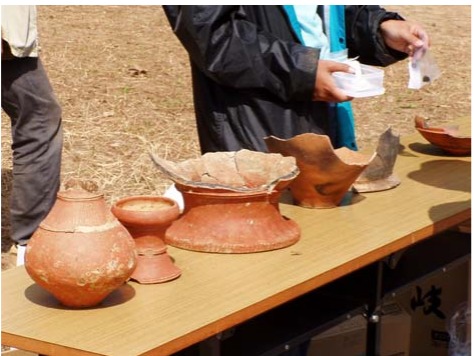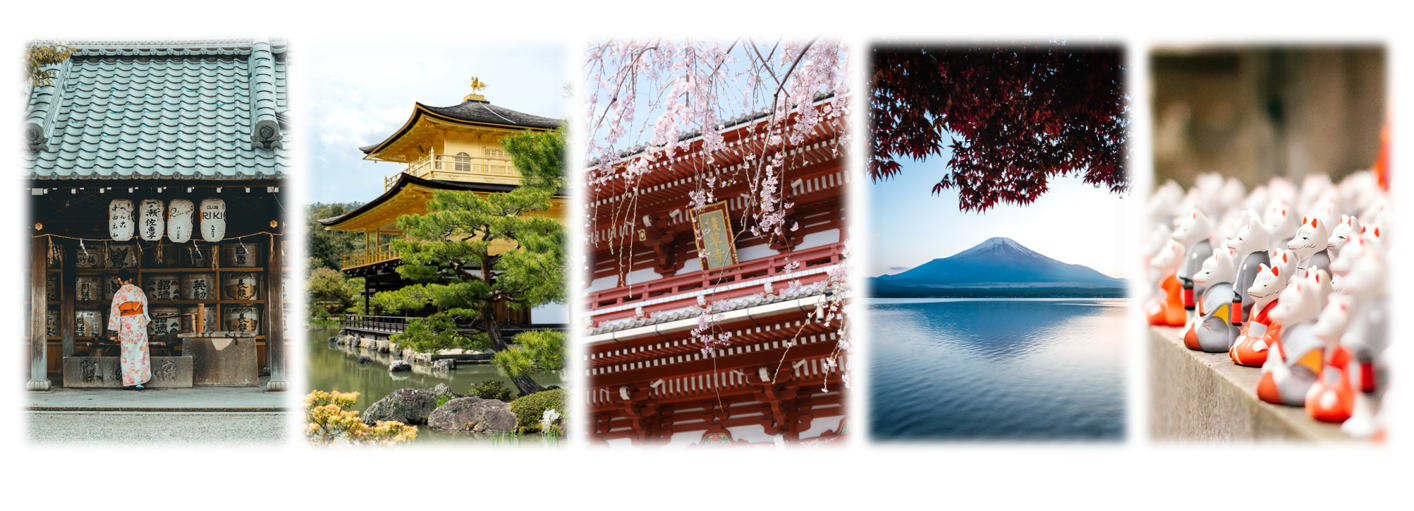Excavations on Iki islands’ Karakami site, throw light on how immigrants filtered into Kyushu
Iki Island just 20 km off the north-western coast of Kyūshū, is strategically situated like a major stepping stone and important safe harbour along the main route of Japan’s ancient trading interactions with the Korean Peninsula and China at a time when sailing technology was still primitive enough to make ocean crossings extremely dangerous missions.

Iki Island is mentioned in the Chinese chronicle of the Wei 魏 Dynasty (CE 221-265), corresponding to the last decades of Late Yayoi (CE 1-250), as well as the later Early Kofun (CE 250-400) period. An entry by the Chinese describes the island as one of several “countries” along the route leading from the Chinese commandery of Lelang 樂浪 in the northern part of the Korean Peninsula to the shadowy Queendom of Yamatai 邪馬台 as known by the Chinese court as Wo (Jap. Wa) 倭, to the east of China.
While the final destination of Yamatai itself is lost in the obscure directions presented in the ‘Records of Wei’ (Chin.Weizhi 魏志), Iki, is more confidently identified by scholars as the island next to Tsushima 対馬. The description of the “country of Iki” in Gishi Wajinden (Account of the Wa People) as encountered by ancient travelers, also closely corresponds to Iki Island’s population size and natural environment.
This article takes a look at the highlights of Oksbjerg’s report “KARAKAMI – A YAYOI SITE IN IKI ISLAND“. The report looks at the excavations carried out at the Yayoi period moated settlement site of Karakami カラカミ in the western part of the Island of Iki 壱岐. The Karakami site is judged to be second in size to the inland trading site of Harunotsuji, which is regarded as the ruined site of the capital of Iki, that was described in a Chinese historical text, the Records of Three Kingdoms. The report is important for the light it throws upon the scale and boundaries of the cultural and trading sphere as seen from the material items exchanged.
“Whereas we can detect waves of immigration in Initial (800 – 500 BCE) and Early Yayoi (500 – 300 BCE). In Middle Yayoi (300 BCE – CE 1) interrelation seems to have taken place sporadically in the shape of arrivals in Iki of smallscaled groups from the Korean Peninsula. From early Middle Yayoi Mumun pottery at Harunotsuji makes up proof of such exchange.
It is in Late Yayoi that we see the organized mutual trading between groups on either side of the Korean Strait and the Yellow Sea, also referred to in the Chinese chronicles that describe diplomatic missions by which the regents of the Wa-kingdoms exchanged gifts with the Chinese emperor. …
The location of the Karida’in River at the foot of the Karakami hill-side would have provided good harbouring facilities, and foreign people visiting the place in times when peace prevailed would access it from there.
Both the Karida’in and also the Hatahoko 幡鉾 River that runs past Harunotsuji would have contained more water in the Yayoi period than they do at present, and they would have been navigable. Also, the sea cut deeper into the coastlines than is the case today, providing hospitable bays near both sites. … It is therefore likely that diplomats arriving from the Korean Peninsula in Late Yayoi, such as we know it from the Wei chronicle, would disembark at Karakami, and access Harunotsuji over land.
Karakami, a gateway to Iki island where rituals were carried out on hillside peaks to propitiate and thank Chinese foreign gods (for a safe passage?), before proceeding to the trading site at Harunotsuji:
“Karakami can be seen as the gateway to Iki in the Yayoi period just like Kōrokan 鴻臚館 in present days’ Fukuoka City can be seen as the gateway to Dazaifu 太宰府, outside Fukuoka City, in the Nara (710-784) and Heian (-1192) periods, says MIYAMOTO Kazuo, and whereas evidence of trade can be observed at Late Yayoi Harunotsuji, Karakami may have been a location of ritual activities. Although most of the foreign pottery discovered at Iki has been found at Harunotsuji, 3-4 complete vessels have been recovered at Karakami in trench 2 that was cut, as was trench 1, in 1952 in close proximity to the small peak where the Karakami shrine is now to be found. The vessels were modestly sized Lelang vessels, thus it seems probable that they were brought to the place by foreign diplomats. The location of these vessels at this high lying spot makes MIYAMOTO consider the likelihood of rituals having taken place on top of the hill peak in the Yayoi Period, and of these having been carried out here by the foreigners before the group resumed the travel and continued to Harunotsuji and later to Matsuro (Karatsu). Entrance rituals for travellers may thus have been part of the role of the settlement, and their location on or near the hill top would be likely.”
Miyamoto Kazuo: evidence of trade can be observed at Late Yayoi Harunotsuji, Karakami may have been a location of ritual activities.
So what was the material culture revealed by the excavations?
1. Peninsula pottery
“The finds of peninsular pottery in Late Yayoi layers at Karakami and particularly at Harunotsuji compose parts of the material culture that lies behind the records written down in the Wei chronicle. … pottery produced locally at Iki is identical to that produced in Itoshima, says Dr. TSUJITA. Thus, the two countries of Iki and Ito apparently shared their material culture (and perhaps their ruler) already in Middle Yayoi. “

2. Bronze mirrors
“… more conspicuous objects are the bronze mirrors found in graves in north-western Kyūshū and fragments of these in the Kinki11 近畿 region… The bronze mirror recovered in 1926 was a small imitated mirror14 and was picked up at the lower lying ranges of the site below any of the trenches. A fragment of a mirror provided with two holes was excavated in 1952 from trench 1. Such fragments of bronze mirrors have been found in Late Yayoi context at other sites as well, particularly are they predominant in the Kinki area in Late Yayoi context. Breaking and depositing of bronze mirrors and bells were part of the ritual life in Late Yayoi, says TSUJITA Jun’ichirō, and continues that the mirror fragments were often provided with two holes just wide enough to let a string pass through. They are therefore assumed to have been used as pendants “
3. Ritual items, such as “four deer scapulae for divination use were recovered from trench 7. Such oracle bones are peculiar to the Yayoi period, and were part of the cultural package that arrived from the Korean Peninsula at the beginning of the Yayoi period.13 As in the Peninsula, where the same type of scapulae have been found from the corresponding temporal horizon,
the deer grew to hold essential religious importance in Yayoi period Japan “.
(Note: Golden seals did not turn up at the site, but would have been carried and guarded very carefully along this route as well: “… the golden seal given to the Na king in CE 57 and recovered at the small island of Shikanoshima 志賀島 in Fukuoka Bay in 1784″ fn: The Chinese emperor’s bestowal in CE 57 of a golden seal upon the king of the country Na, recognised as the region of and around present day’s Fukuoka City in northern Kyūshū, is recorded in a chronicle of the Later Han Dynasty (CE 25-220) (TSUNODA and GOODRICH 1951:2)”
The research report concluded:
“The domestic material culture on Iki was part of a larger cultural sphere that also included the Itoshima 糸島 Peninsula north-west of present day’s Fukuoka City.
As mentioned earlier, this place has been identified as the one of Ito-koku (country of Ito), such as it is described in the Wei chronicle, thus in Late Yayoi it held more than 1,000 households, and was ruled by a hereditary king (TSUNODA and GOODRICH 1951:9). In Middle Yayoi, contact between Iki and groups located further away even within the archipelago seems to have been scarce, although we do see a small degree of import on Iki from eastern Kyūshū. “
References and further reading:
OKSBHERG, Jane 2007, KARAKAMI – A YAYOI SITE IN IKI ISLAND. Bulletin of the Society for East Asian Archaeology (BSEAA) 1, http://www.seaa-web.org.
Tale of the Border Islands 2016 日本遺産「国境の島」kokkyonoshima.com

